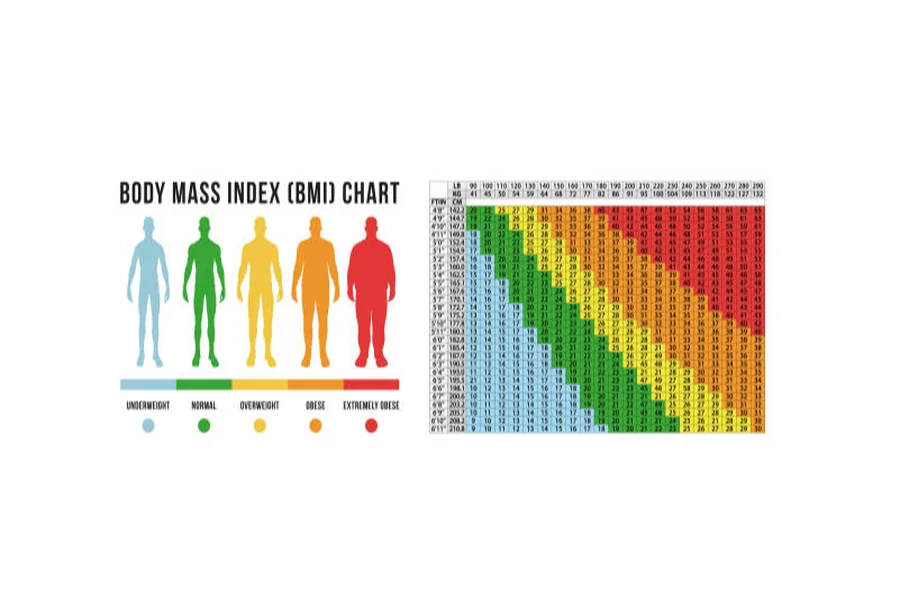Regarding health, one of the most common questions people ask is: What should I weigh based on my height?
The height and weight chart for men offers a general guideline to help individuals understand a healthy weight range. While it’s not the only measure of health, it can be a useful starting point for setting fitness goals, managing Weight, or understanding body composition.
In this article, we’ll walk through:
- The standard height and weight chart for men
- How does it compare with charts for women (including the healthy WeightWeight for 5’3″ females)
- Why BMI matters (but isn’t everything)
- Tips for maintaining a healthy lifestyle
- And much more
This guide is for you, whether you want to lose Weight, build muscle, or better understand your body.
What Is the Standard Height and Weight Chart for Men?
The U.S. Department of Health and Human Services and other medical organizations use standardized tables to give an idea of a “normal” or “ideal” weight based on height.
Here’s a commonly used height and weight chart for men :
Male Height and Weight Chart (inches & pounds)
| HEIGHT (FT/IN) | HEIGHT (INCHES) | MINIMUM WEIGHT (LBS) | MAXIMUM WEIGHT (LBS) |
| 5’0″ | 60 | 107 | 140 |
| 5’2″ | 62 | 113 | 148 |
| 5’4″ | 64 | 119 | 155 |
| 5’6″ | 66 | 125 | 163 |
| 5’8″ | 68 | 131 | 170 |
| 5’10” | 70 | 137 | 178 |
| 6’0″ | 72 | 143 | 185 |
| 6’2″ | 74 | 149 | 193 |
These numbers are based on average body frame sizes and offer a general range, not exact targets.
Healthy Weight for Women: Focus on 5’3″ FemaleFemale
Since our parent keyword includes “healthy weight for 5’3″ female,” let’s also include that comparison:
Female Height and Weight Chart (5’3″)
| HEIGHT (FT/IN) | HEIGHT (INCHES) | MINIMUM WEIGHT (LBS) | MAXIMUM WEIGHT (LBS) |
| 5’3″ | 63 | 107 | 140 |
This shows that a 5’3″ woman has a similar weight range as a 5’0″ man, which makes sense given natural differences in muscle mass and bone density.

Body Mass Index (BMI): Beyond the Chart
While the height and weight chart gives a visual guide, many doctors today prefer using Body Mass Index (BMI) to assess whether someone is underweight, normal, overweight, or obese.
BMI Categories
| CATEGORY | BMI RANGE |
| Underweight | < 18.5 |
| Normal weight | 18.5 – 24.9 |
| Overweight | 25.0 – 29.9 |
| Obese | ≥ 30.0 |
Let’s break down how this works with real examples:
Example: Man Who Is 5’10”
- Weight: 160 lbs
- BMI = ~22.9 → Normal weight
If he gains 20 lbs:
- Net Weight: 180 lbs
- BMI = ~25.8 → Overweight
BMI is helpful, but remember: Muscles weigh more than fat, so athletes may fall into the “overweight” category even if they’re in great shape.
Factors That Influence Ideal Weight
Your ideal Weight depends on more than just a chart or number. Consider these key factors:
| FACTOR | IMPACT ON WEIGHT |
| Age | Slower metabolism as you age |
| Muscle Mass | More muscle = higher weight |
| Bone Density | Some people naturally have heavier bones |
| Genetics | Family history affects body type |
| Lifestyle | Sedentary vs. active life changes needs |
| Diet | Nutrition plays a huge role |
| Medical Conditions | Thyroid, hormones, medications affect weight |
Understanding these helps take the pressure off rigid charts and focuses more on overall health.
Emotional Side of Weight: Self-Worth vs. Scale
Getting caught up in numbers is easy, especially when society emphasizes appearance. But your worth is not tied to your Weight.
Many people struggle with:
- Body image issues
- Comparing themselves to others
- Feeling shame around weight gain
- Celebrating progress beyond the scale
“You don’t have to love every part of your body every day — but learning to respect and care for it is a powerful act of self-love.”
That’s why focusing on health, strength, and happiness is more important than hitting a specific number.
How to Maintain a Healthy Weight
Want to stay within a healthy weight range? Here are simple, science-backed tips:
- Eat balanced meals: Protein, vegetables, whole grains, and healthy fats.
- Drink water: Stay hydrated — sometimes thirst feels like hunger.
- Move daily: Aim for at least 30 minutes of walking or exercise.
- Get enough sleep: Poor sleep disrupts hunger hormones.
- Manage stress: Chronic stress can lead to overeating.
- Stay consistent: Small changes over time make a big difference.
Remember, it’s not about being perfect — it’s about making choices that support your body and mind.
Frequently Asked Questions (FAQ)
Q1: What is the height and weight chart for men?
A: A table showing recommended minimum and maximum weights based on height, used as a general health reference.
Q2: What is the healthy Weight for a 5’3″ female?
A: A 5’3″ woman should aim for a weight between 107 and 140 lbs, depending on frame size and muscle mass.
Q3: Does the height and weight chart apply to everyone?
A: No, it’s a general guide. Individual needs vary based on age, genetics, and activity level.
Q4: Is BMI a reliable indicator of health?
A: BMI is a helpful tool but doesn’t tell the full story — especially for muscular individuals.
Q5: Can you be healthy at any size?
A: Yes! Fitness, nutrition, mental health, and regular check-ups matter more than a single number.
Q6: Where can I find personalized advice?
A: Talk to a doctor, nutritionist, or certified trainer who can tailor a plan to your unique needs.
Final Thoughts: Health Is More Than a Number
Your body is not a math problem — and while charts like the height and weight chart for men and healthy WeightWeight for 5’3″ FemaleFemale can guide you, they shouldn’t define you.
Health is about feeling good, having energy, and living a life you love — no matter your size.
So whether you’re working toward a goal or simply trying to understand your body better, remember this:
You are worthy of health, happiness, and confidence — exactly as you are.
Follow for More Wellness Tips
Stay connected for more health insights, motivation, and tools to live your best life:
| PLATFORM | ACCOUNT LINK |
| Healthy Living Tips | |
| Wellness Journey Community | |
| Healthy Recipes & Routines | |
| YouTube | Fitness & Mindfulness Channel |



